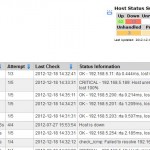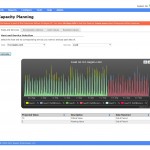It seems almost daily that we get new feature requests for Nagios XI, and thanks to a great extensible design by Ethan Galstad, the development team here at Nagios is able to produce new features and components for Nagios XI on a fairly regular basis. However, as the popularity of Nagios XI continues to grow, so does the need for custom features, modifications, and tools for our customers to use. We’ve added several new features and developer hooks into this most recent version of Nagios XI that we wanted to highlight for users who are interested in creating their own custom feature.
#1. Custom login splash. Several of our resellers have requested the ability to customize the login splash page when users log in to direct their end users to their own support channels and services. We’ve add the ability to allow users to specify their own PHP include for that splash by using the Custom Login Component. A template splash file has been added to the Nagios XI directory tree, and will be preserved through upgrades if users want to modify it. This file is located at /usr/local/nagiosxi/html/loginsplash.inc.php.
#2. Custom status column. We’ve added some new callback functions with this release of Nagios XI, one of which is a callback that allows users to add a new table column to the host or service status tables in Nagios XI. A developer example that adds the host notes field to the status tables can be downloaded from the following link. Custom Column Component.
#3. Custom table icons. Thanks to active community member jsmurphy for this one. We’ve added a new callback function in Nagios XI where custom table icons can be inserted the status tables to act as links, or to perform special actions. This feature is demonstrated in the latest version of the Graph Explorer component, where it inserts a graph icon that can be clicked to show a performance graph pop up for the selected host or service right from the status table.
The bottom line is, we love feature ideas! We base our development priorities largely on what users are requesting from us, so if there’s a feature you want to see in Nagios XI, by all means post a request to tracker.nagios.com or discuss an idea with our tech team at our Nagios Ideas forum.















